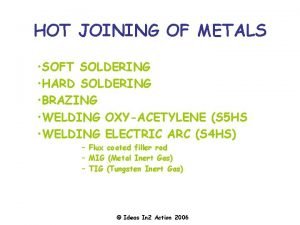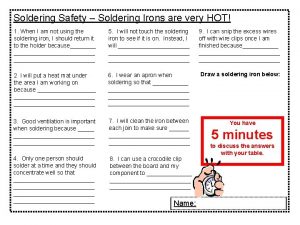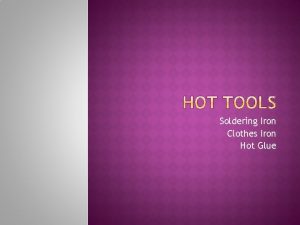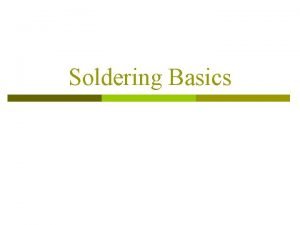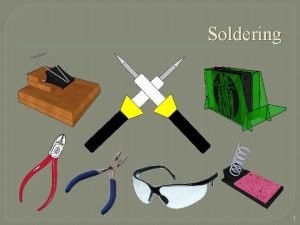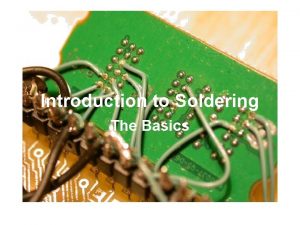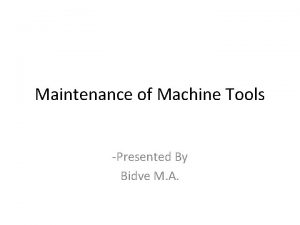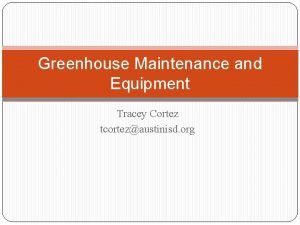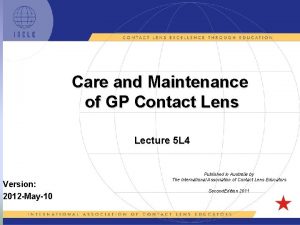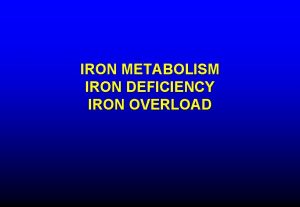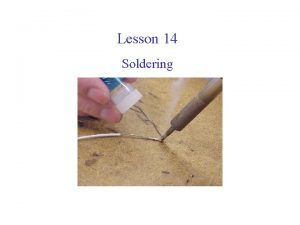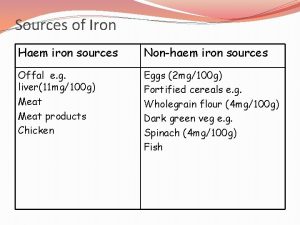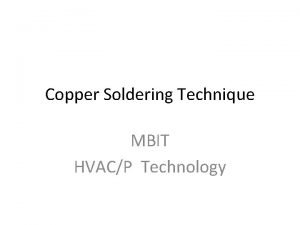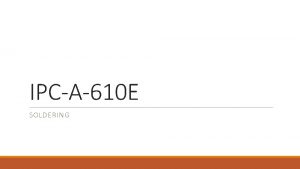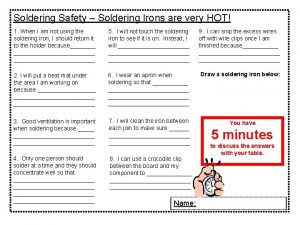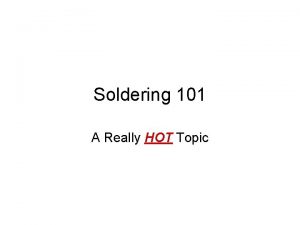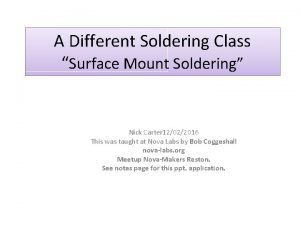Soldering Soldering Soldering Tools Soldering Iron Care Maintenance















- Slides: 15

Soldering

Soldering • • Soldering Tools Soldering Iron Care & Maintenance Tinning Process Good Solder Connections Bad Solder Connections De-Solder Process: Solder Sucker Soldering Safety

Soldering Tools 1) Vise 1 3 2) Safety glasses 4 5 2 3) Solder sucker 4) Solder tool 5) Diagonal cutters 6 9 6) Needle nose pliers 7) Solder 7 10 8) Solder wick 9) Damp sponge 8 10) Soldering iron

Soldering Iron Typically 25 -30 watts Tip temperature 250°C to 280°C

Soldering Iron Care & Maintenance Un-Tinned • A soldering iron must be coated with a thin coat of solder. This will allow for the transfer of heat to the work piece. • This procedure is called tinning. Tinned • The tip must be kept coated with a shiny layer of solder by occasionally wiping and applying solder directly to the tip.

Tinning Process Apply solder to soldering iron tip Roll tip on damp sponge Properly tinned soldering iron tip

Solder Process • Heat both items at the same time by applying the soldering iron to the copper pad and the component lead. • Continue heating and apply a few millimeters of solder. Remove the iron and allow the solder joint to cool naturally. • It only takes a second or two to make the perfect joint, which should appear shiny.

A Good Solder Connection • Smooth • Bright • Shiny • Clean • Concave fillet

Bad Solder Connections Too much solder Too little solder

Bad Solder Connections Cold solder joint Not soldered

Bad Solder Connections Solder bridge Lifted trace/pad

De-Solder Process: Solder Sucker • Apply heat to the connection to be de-soldered. When the solder melts, trigger the solder sucker. • Repeat de-soldering as needed until all solder is removed. Remove soldering iron & solder sucker from area. • Remove component lead.

Soldering Safety • Wear safety glasses when soldering. This includes all individuals in the vicinity of someone who is soldering. • Place soldering iron in an approved holder when not in use. The iron is hot and can cause burns. • Place the soldering iron so that the cord does not get caught in your arms or on others. • Ensure access to proper ventilation. • Verify that the type of solder is safe to use in your working environment. • Secure the components to be soldered before beginning the soldering process.

Soldering Safety • Provide plenty of space to work. • Use a properly-sized point for the soldering job to be completed. • Verify that the tip on the soldering iron has a sharp point and has not been damaged in any way. • Check the power cord for burned or melted sections that show bare wires. Label those cords DO NOT USE and ask the instructor to repair or replace. • Do not to touch molten solder – it is hot! • Make sure that the solder strand is long enough to keep fingers away from the hot iron.

Soldering Safety • Tie back long hair and remove or tuck loose clothing. • Use heat sinks for heat-sensitive parts. Provide sufficient cooling time before removing parts. • Wipe away excess solder with a wet sponge or cloth. • Hold the scrap end when cutting excess leads so that the scrap lead is not thrown into the air. • Cut leads evenly with wire cutters. • Make sure that leads do not short across other traces or leads.
 Hard soldering
Hard soldering Soldering safety
Soldering safety Clothes iron
Clothes iron Ultrasonic soldering iron
Ultrasonic soldering iron Ppp soldering iron
Ppp soldering iron Describe soldering iron
Describe soldering iron Introduction to soldering
Introduction to soldering Soldering process
Soldering process Mass of iron in an iron tablet
Mass of iron in an iron tablet Iron sharpens iron friendship
Iron sharpens iron friendship Primary secondary tertiary health care definition
Primary secondary tertiary health care definition Iron tools and agriculture
Iron tools and agriculture Advanced maintenance for machine tools
Advanced maintenance for machine tools Whitton greenhouses
Whitton greenhouses Menicare gp cds
Menicare gp cds Sewing tools measuring tools
Sewing tools measuring tools
